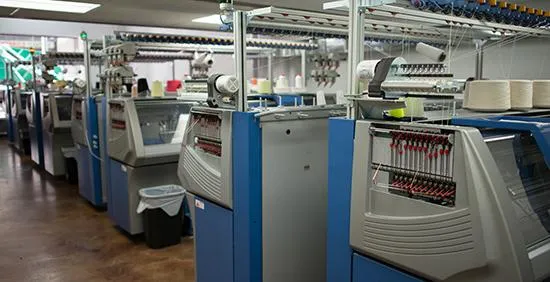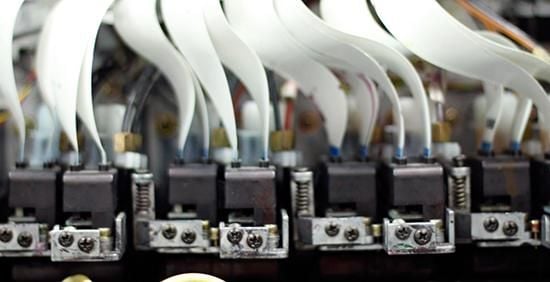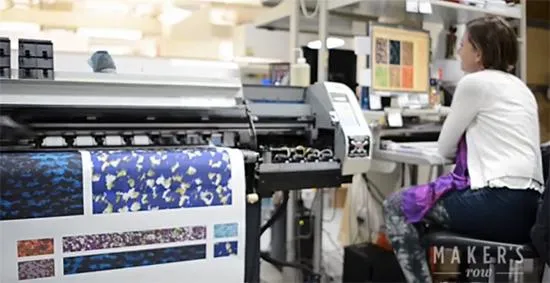How to Bring Manufacturing Back to the USA in Small-Batch Format
Aspiring makers are now finding ways to manufacture their designs in American factories
/https://tf-cmsv2-smithsonianmag-media.s3.amazonaws.com/filer/20121213104038makersrow_470.jpg)
Over the last few years, numerous tools and templates have come along to help individuals create websites, produce indie publications, start ecommerce brands and build social networks. The digital realm can be very amateur-friendly. But it’s much harder to just decide one day to start producing physical objects. Design is specialized, and manufacturing is technical, not to mention inaccessible—at least seemingly so—to the average person. Factories exist in a separate sphere from our daily lives, and increasingly, over oceans. While the notion of supporting American-made goods is certainly not a new one, there’s a new faction getting behind it: independent makers who want to produce small runs of their designs in a domestic facility.
Earlier this year, I visited one such shop, known as ODLCO, based in Chicago. Founded by a pair of young design students who have since graduated, ODLCO makes practical objects—a cooking pot, a butter dish—using materials and manufacturers located as close to home as possible. Their Wabi Nabe cast iron pot, for example, was forged in Wisconsin by a company that primarily turns out boat anchors.

The ODLCO partners had to search high and low to find a foundry that would meet their unusual demand, but this seemingly odd pairing of boutique design studio with specialized manufacturer is becoming less unusual by the week. In fact, enough small-batch makers are in search of this kind of service that a new startup was born around the matchmaking. It’s called Maker’s Row, and it’s all about showcasing American factories online, in a format that enables those often web-fluent makers to find just what they’re looking for, from laser cutting to denim washing to leather binding. Founded by Matthew Burnett, Tanya Menendez and Scott Weiner, Maker’s Row was one of five startups accepted into Brooklyn Beta Summer Camp 2012, where they received seed funding and support to get their idea off the ground.
Before starting Maker’s Row, you had your own experience of seeking a leather goods manufacturer for your accessories line and coming up empty. Can you talk a little bit about how you went about searching? Did you ever find someone or did Maker’s Row come to be before you finished the pursuit of a leather maker?
Matthew: Before Maker’s Row, I started a leather accessory line called Brooklyn Bakery. When seeking out a leather manufacturer I searched Google for weeks, talked to professors at my college (Pratt) and eventually found a manufacturer by word of mouth. Many of my designer friends would purchase trade catalogs, hire consultants, and even drive to other states to visit factories, but I didn’t have time or money to do that.
The factory I eventually found made decent quality products but I would have loved to have had other options as he was only capable of doing very simple leather goods. The factory owner wouldn’t refer me to anyone else as he didn’t want to risk losing me as a client, so I was stuck. I didn’t have the time or money to source factories properly as I was managing the sales, marketing, and fulfillment of the products I had to produce every season.

What is your process now for finding the factories that appear on your site, and what kind of pitch do you give them to help them understand Maker’s Row and want to appear on the site?
Matthew: There are a number of different resources that we have consulted, from factories that were willing to share their contacts with us to local consultants that helped us compile a list of manufacturers and suppliers to reach out to. When we reach out to these factories we just give them a brief overview of the site and guide them through how to best use Maker’s Row. The majority of factories that we speak to understand right away. Sometimes we have to do a bit of hand-holding but we are happy to help any factory set up their profile with us.
It seems to me that appearing on your site could be great for some factories that otherwise have no web presence and minimal ways of expanding their client base. Do you think of yourselves, to some extent, as a little branding or marketing engine to give factories an aura of hipness and currency?
Tanya: A lot of thought went into the Maker’s Row brand and design of the website. We wanted it to be clean and beautiful for designers, yet simple and useful for our factories/suppliers/contractors. Our hope is that the way we have organized the profiles will make it an efficient browsing experience for the user, while portraying the factory (or supplier or contractor) in the best, most accurate way possible.
Matthew: As a marketplace, it is important that we make the site both aesthetically pleasing and informative to our users. This includes clean and easy to use profiles, multiple browsing views for designers and media services for factories to have a polished web presence on our site.

Can you provide a few examples of some of the early maker-factory match-ups that have come through Maker’s Row?
Matthew:It’s now been a month since we launched and we are already getting great feedback. It usually takes more than a month to hear back from a designer/ factory story as the manufacturing process takes time but we held a meet-up with designers at the fashion center in Manhattan and had a waiting list of attendees. One of our listed factories, Baikal Handbags, attended and told us that she is receiving so many client requests, she has a backlog and will be hiring a manager to handle the mounting workload.
Your homepage has a very basic flow chart of the making process, from ideation through production. The way you present the explanation suggests you might be inviting true amateurs—people with a decent concept but no experience or skills in this field—to bring their idea to Maker’s Row. In a way this makes me think of my arena, journalism, and the harsh criticism that rose up around blogging when suddenly untrained writers had access to public platforms and an audience. What are your thoughts on the “rise of the amateur” in manufacturing?
Matthew: I wouldn’t make a direct correlation between the two industries for a couple reasons. One being that Maker’s Row is connecting entrepreneurs (that may have little to no experience) with professionals that can handle the technical aspects of manufacturing. We are not attempting to substitute the craftsmanship of professionals.
Secondly, we are enabling channels of communication between those with product ideas and those with experienced manufacturing skills and equipment to transform those ideas into quality products. Everyone wins in this scenario. We are lowering the barriers of entry for domestic manufacturing is something that will benefit designers, small businesses, manufacturers, and the United States as a whole.
I am truly inspired by how many new (“amateur”) designers are coming up with creative ideas and taking the plunge into entrepreneurship. Giving new designers access to professionals will help them refine the design, construction, and durability of their concepts, making way for a new generation of small businesses that will be able to contribute to their communities and ultimately, to the American economy.

In the same section, you say, “these factories will help refine your idea and think through the different components…”. Is it really the case that the factories you work with will actually start at the beginning with makers? This seems like a real shift in their efficiencies—do they get a stake in the success of the product?
Matthew: We have spoken to hundreds of manufacturers that are more than willing to invest time in a new designer for a number of reasons. One reason is loyalty; if a factory believes that a designer is serious, even if they are new to the industry, they will try to cultivate a relationship and help them grow their business into a major label that will eventually be placing large orders with them.
Another reason some factories are looking for small scale production is because they are able to create multiple revenue streams from small businesses rather than maxing out their labor capacity on one large client. This way the factory is able to maintain a steady workflow that isn’t dependent on one large client.
/https://tf-cmsv2-smithsonianmag-media.s3.amazonaws.com/accounts/headshot/sarah-rich-240.jpg)
/https://tf-cmsv2-smithsonianmag-media.s3.amazonaws.com/accounts/headshot/sarah-rich-240.jpg)